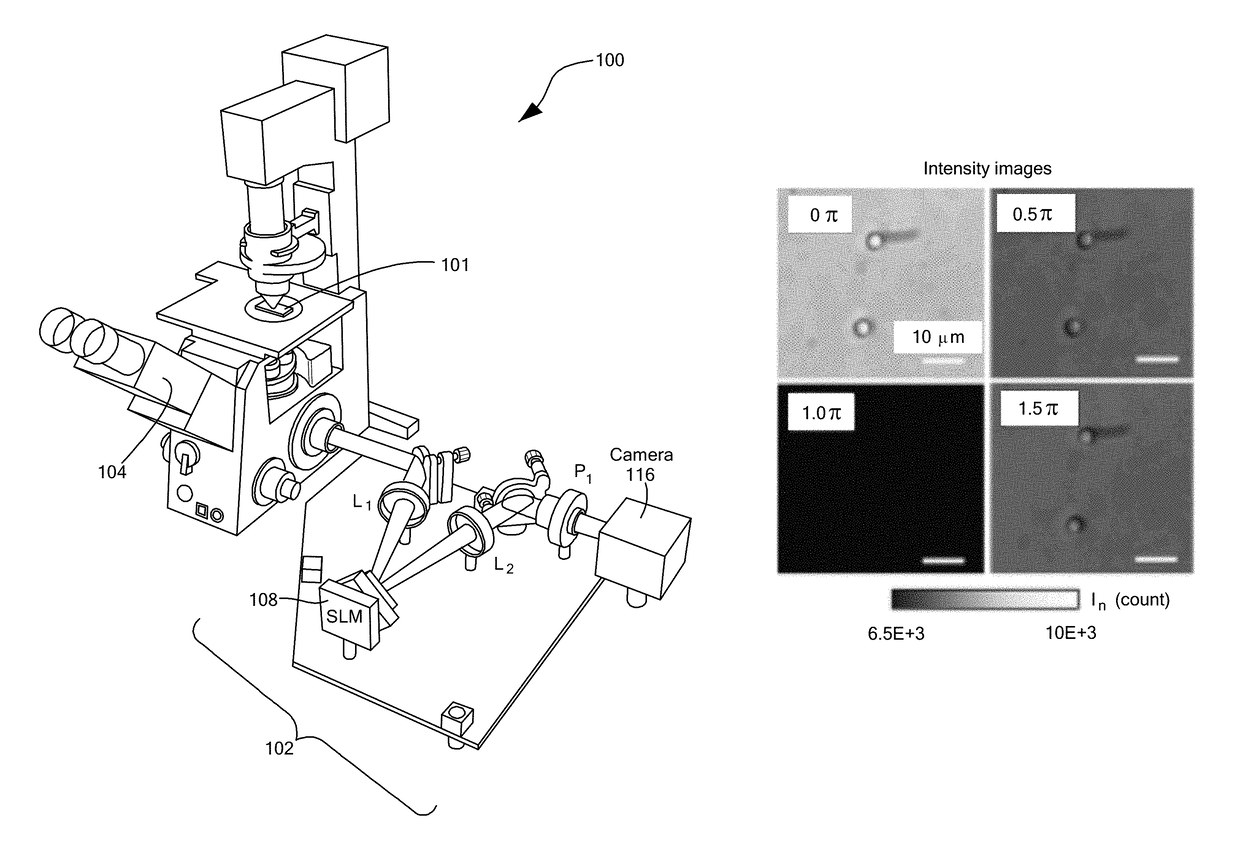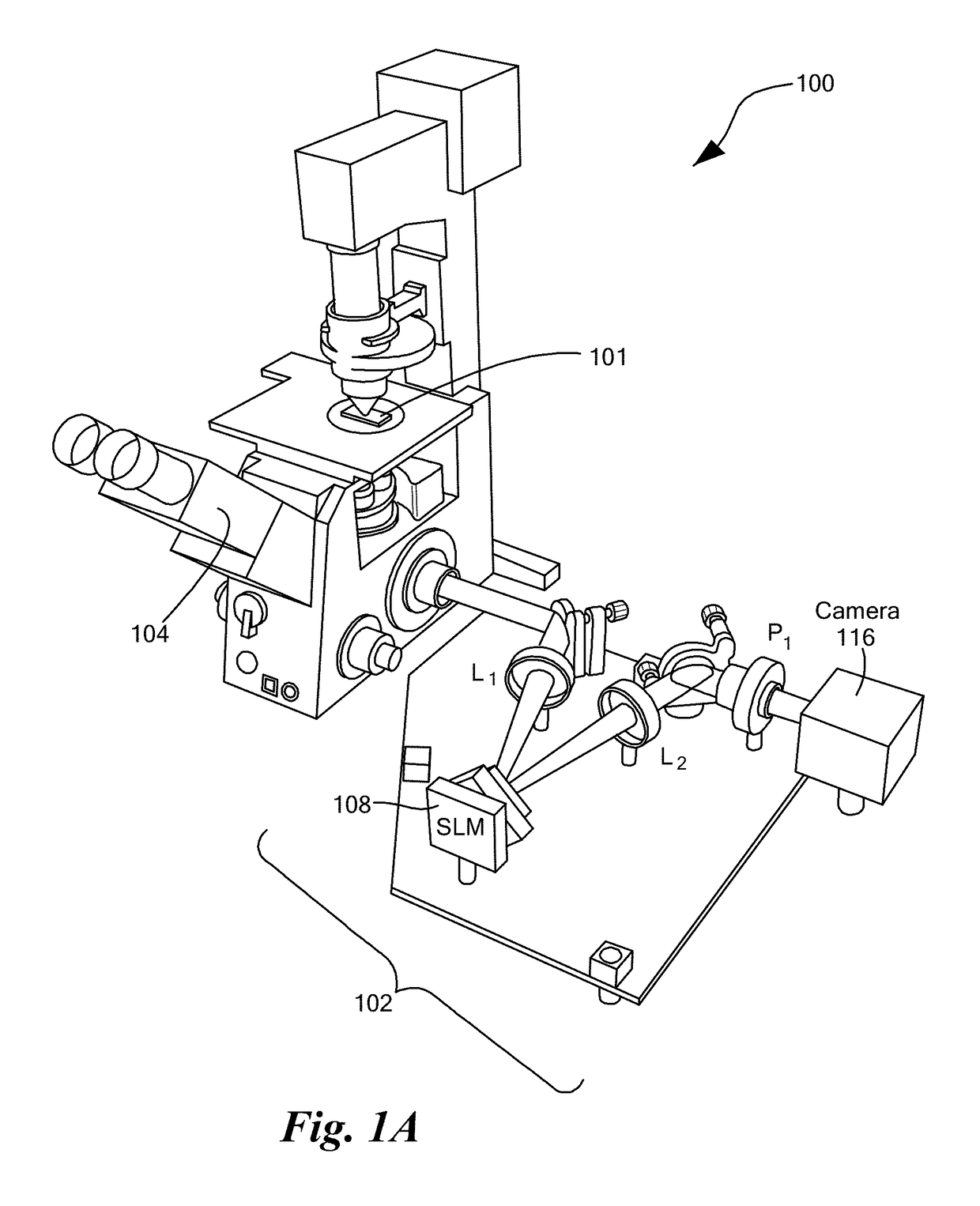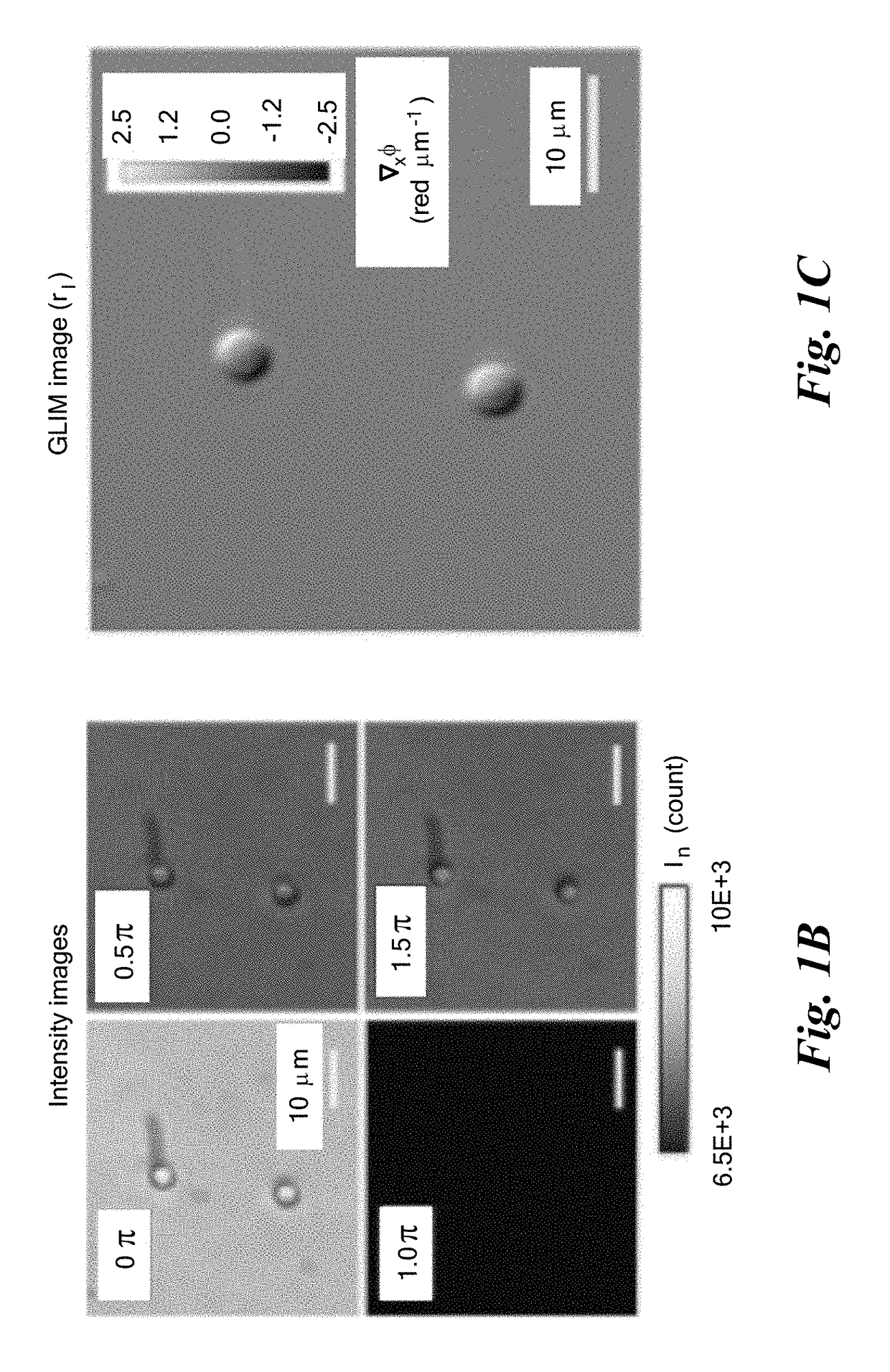Gradient light interference microscopy for 3D imaging of unlabeled specimens
a technology of light interference and microscopy, applied in the field of unlabeled cells, can solve the problems of difficult challenges, difficult to solve, and the current requirements for 3d imaging are new, and achieve the effect of improving the depth of sectioning
- Summary
- Abstract
- Description
- Claims
- Application Information
AI Technical Summary
Benefits of technology
Problems solved by technology
Method used
Image
Examples
example 1
ne Micro-Beads
[0055]FIG. 1D demonstrates the capability of GLIM to extract quantitatively the phase gradient, where a 4.5±5% μm polystyrene micro-bead (Polysciences Inc.), with a refractive index value of 1.59 at the central wavelength, is imaged. The beads are immersed in oil (Zeiss Inc.) with a refractive index value of 1.518 to generate a total phase shift of 3.87 radians. FIG. 1D shows the measured phase gradient at NAcon=0.09. FIG. 1D shows the quantitative phase map, ϕ(r), and FIG. 1E displays a line profile through the center of the bead.
example 2
s
[0056]Growth and proliferation of large populations of adherent cells over extended periods of time is demonstrated with reference to FIGS. 2A-2C. Specifically, the culture may be characterized by extracting parameters such as single cell mass, volume, surface area, while simultaneously measuring the intracellular transport on timescales associated with the cell cycle. FIG. 2A shows scanning GLIM data of Hela cells in culture over a 4.48×5.54 mm2 field of view. This image is a mosaic consisting of 16×20 individual frames, imaged by a 40× / 0.75 NA objective, and a condenser aperture (NAcon) adjusted to NAcon=0.32. FIGS. 2B & 2C show magnified views at different scales for a region denoted by the white box in FIG. 2A. The acquisition took approximately 3 minutes for each 16×20 frame, which was assembled into a time-lapse mosaic following the procedure outlined method section. The GLIM image 210 (shown in FIG. 2C) provides a quantitative phase gradient map at the spatial resolution of ...
example 3
y of Single Cells Using GLIM
[0058]Due to the high numerical aperture of the illumination, excellent sectioning capabilities may be advantageously achieved in accordance with embodiments of the present invention, yielding tomographic imaging of both thin and thick samples. Referring now to FIGS. 3A-3M, GLIM tomography was applied to a 30% confluence HeLa cell culture over 21 hours. Seven fields of view (FOVs) were imaged using a 63× / 1.4 NA objective with a spatial sampling rate of 10.8 pixels / μm.
[0059]Each FOV was scanned every 22 minutes. For each time point, the sample was scanned over a total depth of 28 μm with a step size of Δz=0.07 μm. FIGS. 3A and 3B show the x-y and x-z cross-sections of the GLIM measurement, i.e., the quantitative phase gradient. In order to remove the background due to weak sectioning at small scattering angles, a spatial filtering operation was performed. FIGS. 3C and 3D shows the corresponding x-y and x-z cross-sections of the filtering, with yellow arrow...
PUM
 Login to View More
Login to View More Abstract
Description
Claims
Application Information
 Login to View More
Login to View More - R&D
- Intellectual Property
- Life Sciences
- Materials
- Tech Scout
- Unparalleled Data Quality
- Higher Quality Content
- 60% Fewer Hallucinations
Browse by: Latest US Patents, China's latest patents, Technical Efficacy Thesaurus, Application Domain, Technology Topic, Popular Technical Reports.
© 2025 PatSnap. All rights reserved.Legal|Privacy policy|Modern Slavery Act Transparency Statement|Sitemap|About US| Contact US: help@patsnap.com



